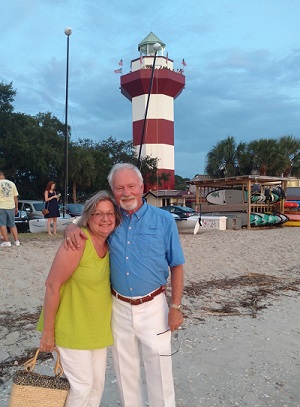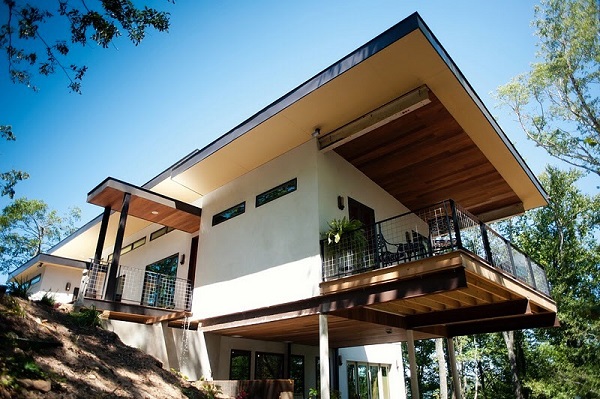Hemp, a multi-purpose crop that delivers fibres, shivs, seeds, and pharmaceuticals is currently used in insulation materials and bio-composites for a more sustainable construction industry. Russ Martin and his wife Karon Korp tell their story as owners of the first hemp house in the US
Hemp is getting more attention for its multiple uses in sustainable building. In the US, former Asheville mayor Russ Martin and his wife Karon Korp, built the first hemp house in 2010 using crop imported from the UK. They were inspired by Frank Lloyd Wright, an American architect and interior designer who believed in designing structures that are in harmony with humanity and its environment. Wright called this philosophy “organic architecture.”

Photo source: Karon Korp
Since legislation passed in 2014, hemp homes can be homegrown in the US. However, the industrial cultivation of this plant is still in its infancy. There were only 4,000 hectares planted in 2016 in contrast to 33,000 hectares of industrial hemp grown in Europe in the same year.
“Hemp is a great option and a sustainable product that should be more widely accepted and used,” says Karon Korp, who together with her husband, lived for six years in their hemp house in North Carolina. “Designer Anthony Brenner worked with us to help create the home and its features, and brought the idea of building with hemp to us.” youris.com asked Korp to share some more details from their life in the hemp house.
What was your main motivation for building a hemp house?
We wanted to do something that had not been done before, in a healthy, green way that was more sustainable for our planet.
Do you still live there?
We sold the home last year, the first of its kind in America. Though the space was beautiful and we enjoyed living there very much, it was at 3,500 feet (around 1,060 metres) elevation, almost the top of the mountain. Our lifestyle and work commitments found us in town most days and we decided to simplify our lives a bit by moving to a more convenient neighbourhood.
How was living in the hemp house in the mountains like?
It was a sanctuary almost on top of the mountain, views of mountains and nature all around, filled with light in every room, ample wildlife – lots of black bears!

Photo source: Anthony Brenner
Can you comment on how the insulation and air-purifying properties were when you lived there? How do they compare to your previous houses?
The home is 3,000 square feet (around 279 square metres), and the insulating factor of the hemp proved quite effective, even at the higher elevation where weather could be colder and more severe than lower elevations. Our electric bill was routinely below average for homes of similar size. As for the air-purifying properties of the home, I would say we were less prone to allergies while living there for six years.
Could you tell us more about other eco-friendly materials that were used in the house?
We had walls made out of a product from recycled paper. They are structurally more sound than traditionally framed walls, and on the exterior they are covered with a magnesium oxide board finish. We used recycled building materials throughout the home: flooring, windows, vanities. We used natural finishes, and NO VOC (volatile organic compounds) stains, and paint. The hemp was fire retarding.
What about the costs of living in a hemp house?
The cost of our house average monthly energy bill was $100 (around €85) for a 3,000 square feet (around 279 square metres) home. Moreover, we saved 25 percent on our homeowner’s insurance after moving into the hemp house.
Can you also share the price of the house when you sold it?
The house sold for $685,000 (around €584,000) in May 2017.
Do you think hemp could be the preferred material in the future of the construction industry?
While I don’t think it will ever completely replace traditional methods and materials, industrial hemp could revolutionise the building industry, and provide a new agricultural product that would support farmers and rebuild their industry.
By Susan Fourtané
14 December 2017

